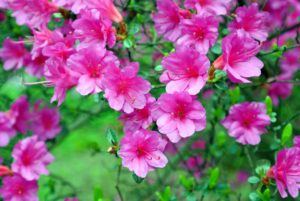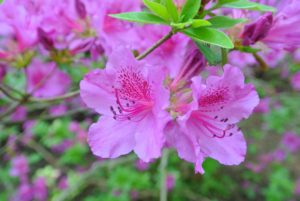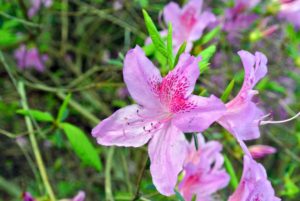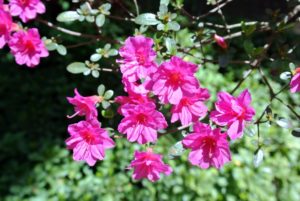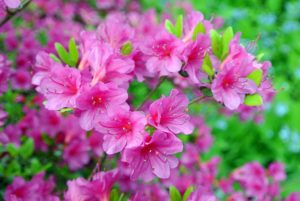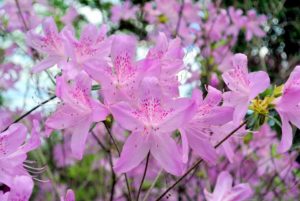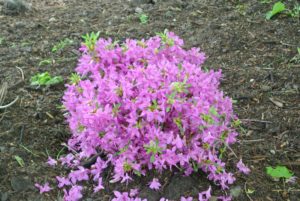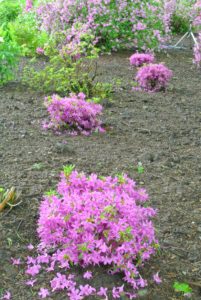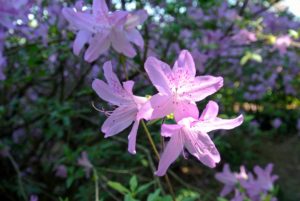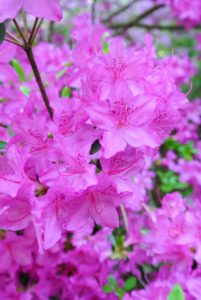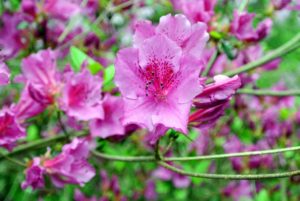Blooming Azaleas at My Farm
My azaleas are putting on quite a show at my Bedford, New York farm.
Of all the shrubs that flower in spring, azaleas and tree peonies provide some of the most brilliant displays. I have them planted together in a garden just outside my Summer House, and when they bloom this time of year, they make one corner of my property erupt with spectacular color.
Azaleas can thrive in a wide variety of growing conditions, which makes them so useful in many different landscapes. They are popularly referred to as the “royalty of the garden” - long adorned for their brightly colored flowers and evergreen foliage. Plant enthusiasts have selectively bred azaleas for years, producing thousands of different cultivars. Enjoy these photos.
- My azalea collection is in a lightly wooded area where they get filtered sunlight through the day.
- Azaleas are flowering shrubs in the Ericaceae family, which includes blueberries and mountain laurel. They are also all rhododendrons and members of the genus Rhododendron.
- Azaleas are generally healthy, easy to grow plants. Some azaleas bloom as early as March, but most bloom in April and May with blossoms lasting several weeks.
- Azaleas are native to several continents including Asia, Europe and North America. These plants can live for many years, and they continue to grow their entire lives.
- The tube-shaped base of the flower contains a stamen that protrudes from the center. The leaves are often evergreen with wooly undersides.
- Azalea petal shapes vary greatly. They range from narrow to triangular to overlapping rounded petals. They can also be flat, wavy or ruffled.
- Azalea flowers can be single, hose-in-hose, double or double hose-in-hose, depending on the number of petals. These bold pink azalea blossoms are hose-in-hose and contain 10-petals each.
- Many azaleas have two to three inch flowers and range in a variety of colors from pink to white to purple, red, orange and yellow.
- Plant height ranges from about three to six feet for most varieties, but rare plants can range from under one foot to well over 15-feet tall.
- The best time to shop for azaleas is when they are in bloom so you can see their flower colors and forms.
- I recently bought several of these pink azaleas. They are already blooming so wonderfully.
- They will fill in this space nicely.
- Buy plants that are sturdy, well-branched and free of insect damage or diseases. And, avoid plants with weak, spindling growth and poor root systems.
- When selecting a location for planting, be sure you know the mature size of the plants so they can be grouped accordingly in the landscape – tall plants in the background and short plants in the foreground.
- Azaleas thrive in moist, well-drained soils high in organic matter. Morning sun and afternoon shade is ideal.
- Keep azaleas where they can be protected from midday and winter sun to prevent leaves from drying out and burning.
- Once the plants establish their roots, scatter a handful of slow release organic fertilizer near each plant once in the early spring and again in the fall.
- Azaleas have short root systems, so they can easily be transplanted in early spring or early fall. Be careful not to plant too deep and water thoroughly after transplanting.
- And never eat azaleas. Like its cousin the rhododendron, the azalea is a toxic plant, and all parts of the plant are poisonous, including the honey from the flowers.
- Although azaleas are resistant to many pests and diseases, they are susceptible to some problems, including bark scale, petal blight, powdery mildew and a leaf disease called azalea gall.
- Many factors influence the quantity of azalea blooms. If an azalea fails to bloom, it could be lack of moisture during late spring and summer; less than three hours of sun per day; or, poor plant nutrition, which could reduce the number of buds.
- Prune azaleas after they bloom to remove tall, lanky growth or vigorous suckers that detract from the overall form and shape of the plant.
- They benefit greatly from a few inches of acidic mulch applied around the base to protect its roots and help conserve moisture.
- These plants are so stunning in any part of the landscape.
- I just love how the rich bold colors look against the green foliage. What azalea varieties grow in your garden? Share your comments with me in the section below. I love hearing about your spring gardens.

